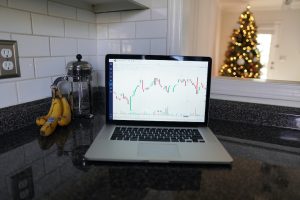The forex market is a highly volatile market that experiences numerous price movements on a daily basis. The market can be influenced by various factors such as economic indicators, political events, and global news. To be a successful forex trader, it is important to understand how to identify when the market hits its lows and highs. In this article, we will look at how to know when the forex market hits the lows and highs of the day on the 15-minute chart.
The 15-minute chart is a popular chart used by forex traders to identify short-term price movements. It is a timeframe that is ideal for traders who prefer to take short-term positions in the market. The chart displays the price movements of currency pairs over a 15-minute period. It is important to note that the 15-minute chart is just one of the many timeframes used by traders to analyze the market. Other popular timeframes include the 1-minute chart, 5-minute chart, and the 1-hour chart.
Identifying the lows and highs of the day on the 15-minute chart involves looking at the price movements of currency pairs throughout the trading day. The lows and highs of the day represent the lowest and highest points that a currency pair reaches during the trading day. These points are important because they can be used by traders to determine the direction of the market and the potential for future price movements.
To identify the lows and highs of the day on the 15-minute chart, traders should first look at the opening price of the currency pair. The opening price represents the price at which the currency pair started trading at the beginning of the day. Traders should then look at the highest and lowest points that the currency pair reaches during the day. These points are represented by the high and low of the day on the 15-minute chart.
Once traders have identified the high and low of the day on the 15-minute chart, they can use this information to make trading decisions. For example, if the currency pair is trading near the high of the day, traders may decide to take a short position in anticipation of a price reversal. Conversely, if the currency pair is trading near the low of the day, traders may decide to take a long position in anticipation of a price reversal.
It is important to note that identifying the lows and highs of the day on the 15-minute chart is not an exact science. The market can be influenced by numerous factors that can cause price movements to deviate from their normal patterns. Traders should also be aware that the lows and highs of the day on the 15-minute chart may not be the same as the lows and highs of the day on other timeframes. It is important to use multiple timeframes to get a complete picture of the market.
In conclusion, identifying the lows and highs of the day on the 15-minute chart is an important skill that forex traders should possess. Traders should look at the opening price of the currency pair and the highest and lowest points that the currency pair reaches during the day. This information can be used to make trading decisions and to determine the direction of the market. Traders should also be aware that identifying the lows and highs of the day on the 15-minute chart is not an exact science and that multiple timeframes should be used to get a complete picture of the market.





